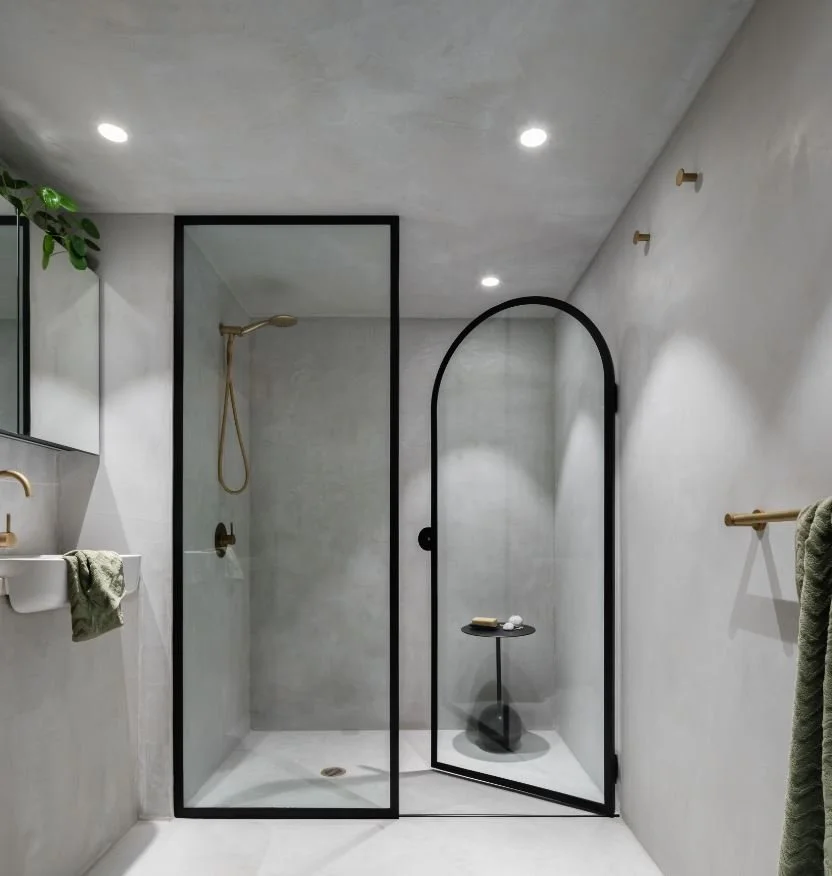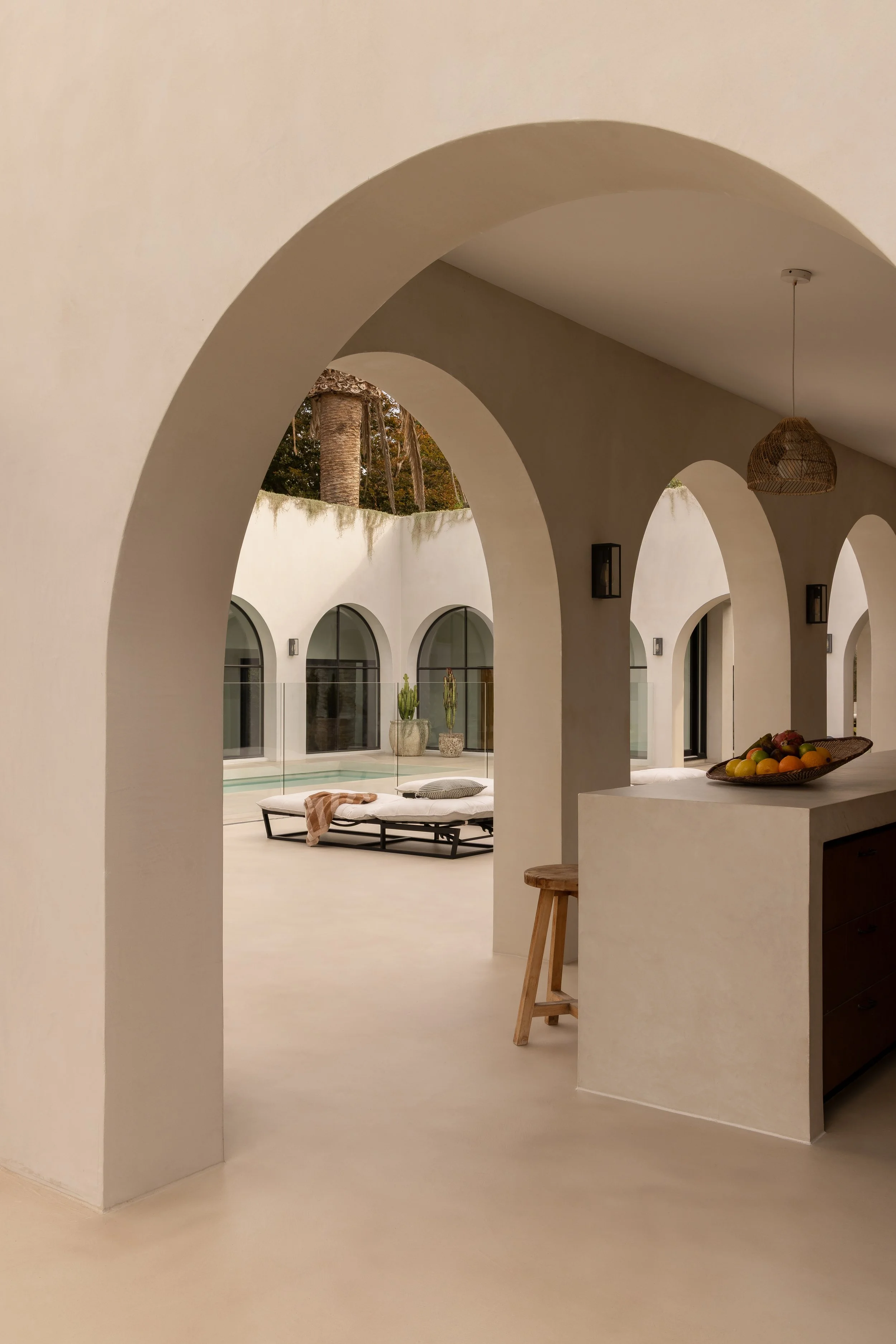Modern Resurfacing for Renovations
Redefining the Concrete Overlay
A microcement concrete overlay is the next evolution in resurfacing technology; a thin, flexible coating system designed to be applied directly over existing concrete or tiles.
Where traditional overlays simply conceal imperfections, microcement transforms. At just 2–3mm thick, it provides the tactile depth and aesthetic of poured concrete without the need for demolition or re-pouring. The result is a monolithic, seamless surface that performs as beautifully as it looks.
Alt. Surfaces have been working with X-Bond Microcement since 1999, long before overlays became mainstream in Australian design. Our expertise ensures every installation is both structurally sound and visually flawless.
Why Choose Microcement Instead of Replacing Concrete
Demolition and re-pouring might seem like the obvious route when concrete starts looking tired, but it’s often unnecessary. Microcement overlays allow you to:
Resurface instead of remove — skip demolition, noise, and waste.
Achieve thin, lightweight contstruction — perfect for projects where height and weight tolerances matter.
Create a designer finish — smooth, continuous, and available in a curated palette of tones and textures.
Minimise downtime — fast application and curing for faster renovation turnarounds.
Reduce environmental impact — less material waste.
Read next: Overlay vs. Demolition: FAQ
The Science of Adhesion: Why X-Bond Outperforms
The strength of an overlay starts below the surface.
X-Bond Microcement uses a proprietary polymer-modified binder that chemically adheres to the substrate. This fusion creates a flexible, interlocking bond capable of adapting to micro-movements in concrete, tiles, or screed — preventing cracks and delamination.
The result is an overlay system that’s strong enough for high-traffic floors and external areas, as well as a standard feature wall.
Compare systems: Microcement vs. Concrete: What’s the Difference?
Where Microcement Overlays Work Best
X-Bond’s versatility makes it suitable for a range of interior and exterior applications:
Concrete Floors: Restore old slabs.
Bathrooms & Wet Areas: Waterproof and slip-resistant when sealed correctly.
Walls: Achieve a continuous look across vertical and horizontal planes.
Kitchens & Joinery: Apply to benchtops, splashbacks, and cabinetry.
Outdoor Zones: Patios, balconies, and pool surrounds — UV-stable and weather-tolerant.
Each installation is tailored to the project’s surface type, intended use, and aesthetic requirements.
Explore related: Microcement Flooring
Installation Process: From Base to Finish
Every overlay follows a structured application process handled by certified installers:
Assessment & Preparation: The existing substrate is inspected for cracks, moisture, and weak spots. Any defects are repaired, and the surface is ground to remove contaminants such as sealers, adhesives, or laitance. The goal is to create a clean, sound, and stable base ready for resurfacing.
Masking & Protection: Surrounding areas are carefully masked to protect adjacent walls, fittings, and fixtures. This ensures a precise edge and prevents overspray or splatter during application.
Base Coats: Some prep is undertaken, including a ‘scratch’ coat, to establish the foundation for adhesion and surface uniformity. Where necessary, reinforcing mesh or anti-fracture membranes are added to stabilise movement or bridge fine cracks. *This is also when a waterproofing membrane may be applied.
Microcement Layers: For the standard Luma and Blade finishes, we apply two hand-trowelled coats of X-Bond evenly across the entire area. For Mineral and Natural Concrete, application involves a spray gun.
Curing & Refinement: Once the final coat has cured, the surface is may be polished or sprayed with additional colour stain depending on your chosen finish.
Sealing: A high-performance sealer is applied to protect the surface against water, staining, and abrasion. This final step enhances durability and ensures the overlay performs beautifully in both residential and commercial environments.
This precision process is what distinguishes a professional microcement finish from basic resurfacing products.
When applied correctly, X-Bond Microcement overlays form a strong, continuous layer that resists cracking, water ingress, and abrasion. Unlike paint-on coatings, it doesn’t peel or delaminate; it becomes part of the substrate itself.
That’s why architects and designers specify microcement overlays for high-performance environments, from luxury residences to commercial fit-outs, where both longevity and aesthetic continuity matter.




